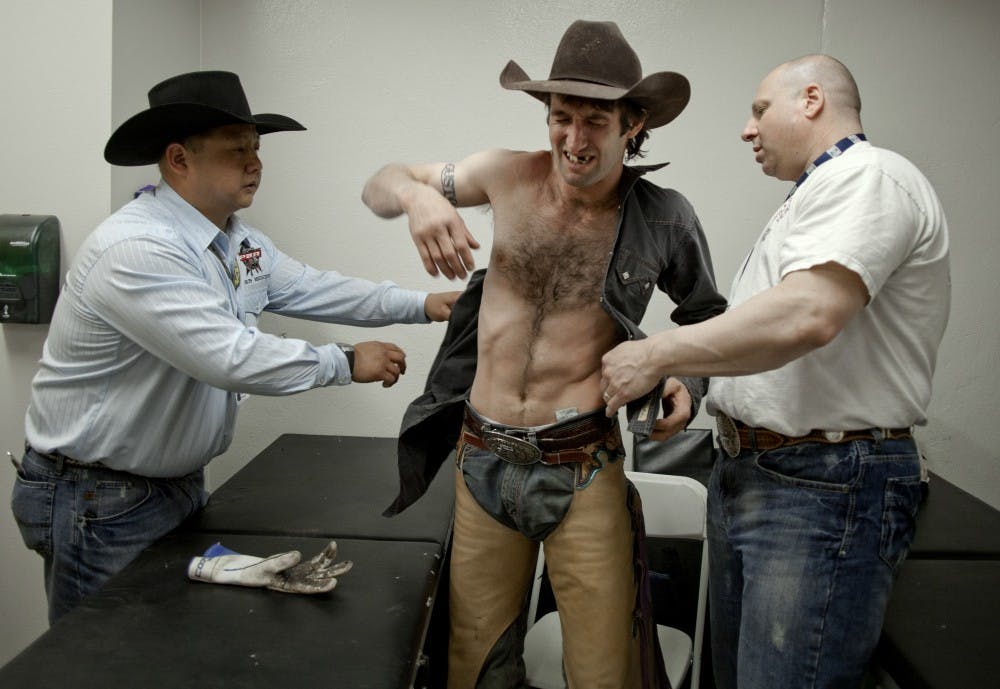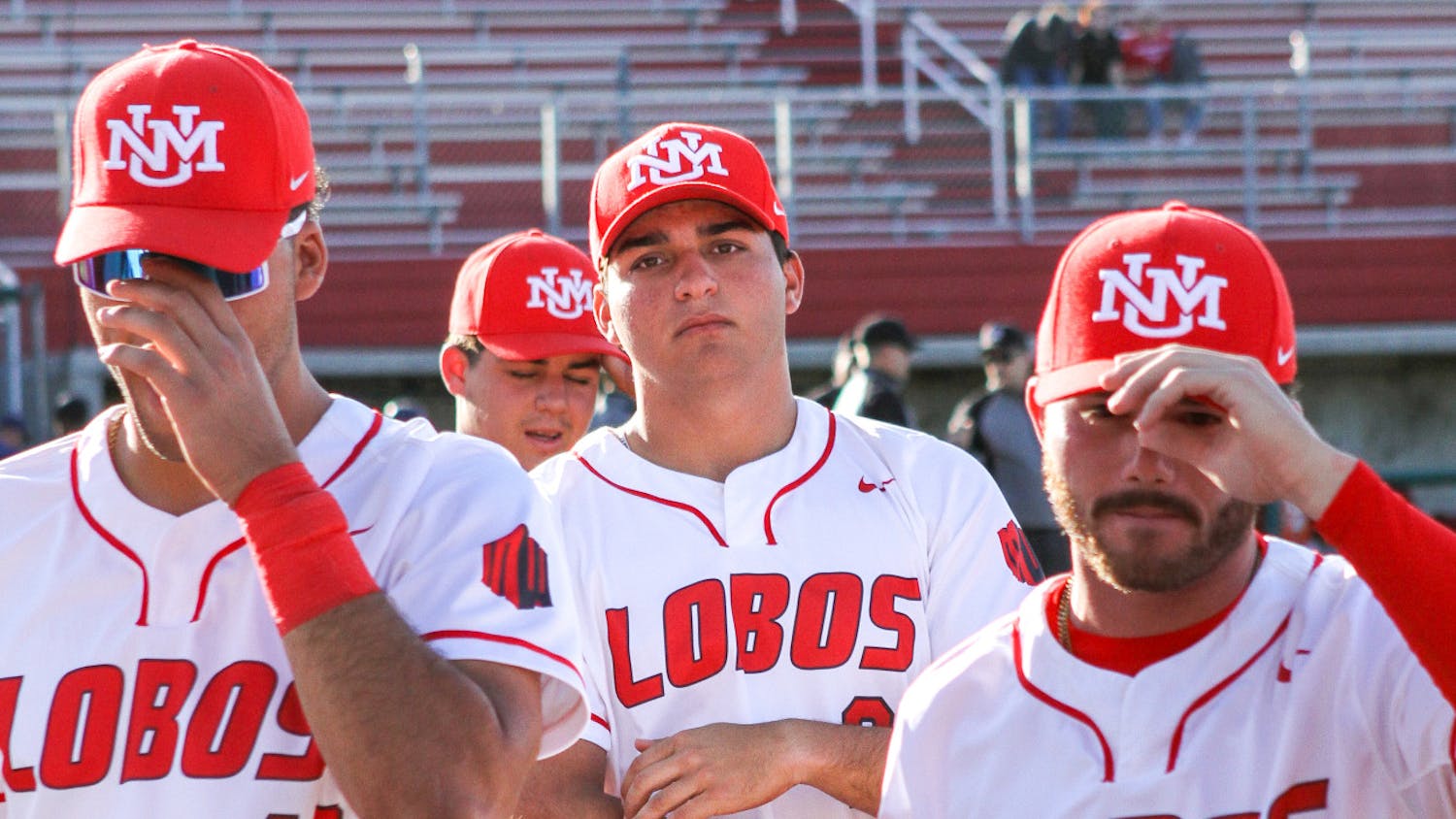culture@dailylobo.com
The hoof of a 1,500-pound bull narrowly missed rider Ben Jones’ cowboy hat as the bull butted into his upper arm. Jones doubled over on the stamped dirt as the bull was roped, and three sports-medicine technicians ran into the pen. A toothless Jones limped out of the pen and up the steps of The Pit, pausing to grab the red railings and cradle his ribs.
When Jones walked in, it was a typical Sunday in the medic room in the southwest corner of The Pit at the 17th annual Ty Murray Invitational, an international bull riding competition hosted by the Professional Bull Riders. Three other injuries occurred that day — a normal number, according to Tandy Freeman, medical director of the Professional Bull Riders. Freeman said that in bull riding, there is typically one injury for every 15 rides, which he said is much higher than traditional sports.
“If that were the case in football, that would mean there’s somebody coming off the field with a new injury on every play. In fact, there are three guys coming off the field every two plays with a new injury,” Freeman said. “So that’s a pretty high injury rate. I think most people consider football as a mainstream sport with a pretty high risk for injury, but obviously this has a higher risk.”
The riders visit the medic room before the competition to get their ankles wrapped, legs stretched and fingers taped. Hopefully they won’t return afterward.
For those who do, Freeman said injuries range from sprained fingers to nerve damage.
“We see typical sports-medicine injuries like ACL tears, AC separations, all that stuff,” Freeman said. “But then we also see the same sorts of stuff you see in motor vehicle accidents, like spine injuries and long-bone fractures that are uncommon in sports.”
Freeman said the cowboys are willing to risk injury for a variety of reasons. The sponsored riders often have to ride to receive money from their sponsors, which adds incentive. Some studies suggest professional bull riders have a higher pain threshold. And then there’s the cultural idea of “cowboying up” and dealing with the pain.
“If you’re scared of getting hurt, you probably shouldn’t ride bulls,” said bull rider J.B. Mauney. “I always say, ‘If you can’t put the pain out of your mind for eight seconds, you don’t need to ride.’”
PBR program director Rich Blyn said a recent slew of injuries have been head-related, which prompted the PBR medical team to come up with new protocols for head injuries and concussions. Blyn said the goal of the protocol is not just to check for concussions, but to show the riders how dangerous it could be for them to ride with a head injury.
“If they had a big cast on their head, it would be one thing, but they don’t. You can’t see a headache, and these guys aren’t going to say, ‘I’m going to sit out,’” Blyn said. “Most of them want to go, so we’ve had to come up with these types of tests so we can show the guys ‘You’re not ready to get on a bull right now. It’s not that we don’t want you to ride. It’s that we want you to be in this profession for a long time.’”
Bull riding is one of the few sports that does not require riders to wear helmets, although about 60 percent of the professional bull riders do wear them. But some riders refuse for a variety of reasons and only wear a cowboy hat.
Get content from The Daily Lobo delivered to your inbox
“Some of them say it interferes with their balance, some say it interferes with their peripheral vision. But honestly, they don’t wear them because they don’t want to,” Freeman said. “Whatever they tell you the reason is, what it really boils down to is they don’t want to, and in this sport they don’t have to.”
Mauney said his parents made him wear a helmet when he was younger, but he “left it at home” because he can see better and keep his chin further down without it.
“It’s bull riding: You’re going to get hurt no matter what, whether you got a helmet on or not,” Mauney said. “My dad said, ‘What happens if you get hit in the head,’ and I told him, ‘Then I get hit in the head.’”
Rider Emilio Resende’s cheek was grazed by a bull’s horn, and he received two sutures to re-attach the flap of skin. Resende doesn’t wear a helmet.
The medics cracked jokes under the bright medical lights as Resende spit tobacco into a bucket. The last cowboys limped out of The Pit, waved at adoring fans in cowboy hats and walked past the bull pens. The medics cleaned up the last specks of blood from the operating table and packed away the scissors, gauze and ace bandages, ready for next week in Billings, Mont.






